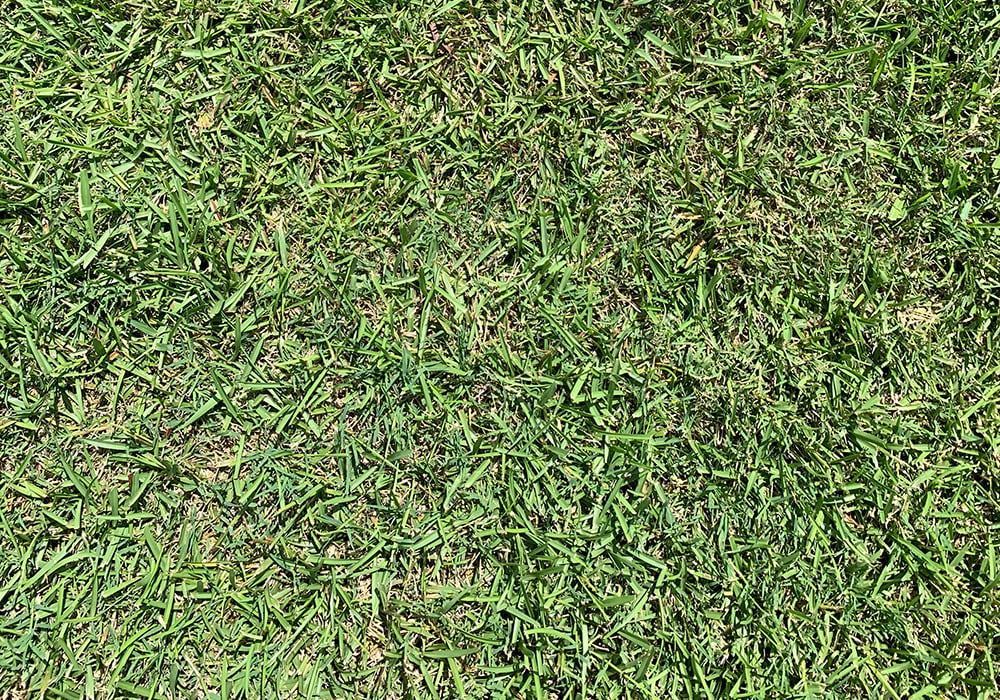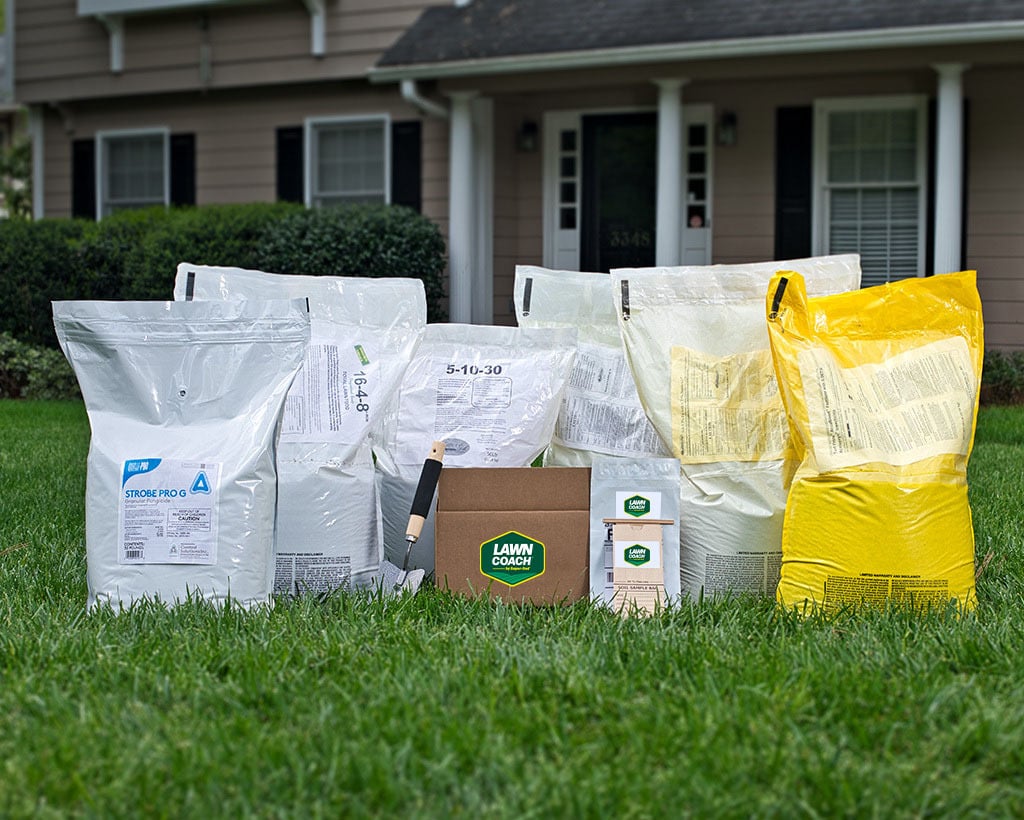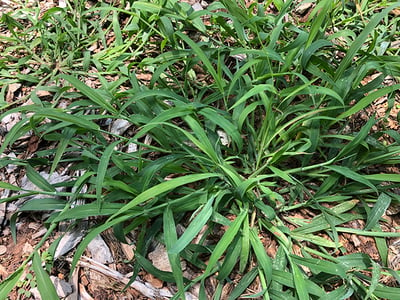

How to Get Rid of Bermudagrass in Centipedegrass Lawns


Imagine this scenario: It’s a gorgeous, albeit muggy, summer day. You have just finished mowing your Centipedegrass lawn. You are sipping on a cool glass of lemonade, and no shoes are on your feet. You are simply enjoying the feel of the blades of grass against your soles as you marvel at your work. Then you feel something that doesn’t feel the same. You bend down, trying to find what caused it. Huh? That patch looks different than the rest of your lawn. What is that? Panic sets in . . . Bermudagrass!
Great! Now you must deal with Bermuda in your Centipede lawn! You walk around, trying to spot any other patches. Caleb Cunard, grass seed controller for Super-Sod, says to scout for Bermuda in the morning because, "Bermuda holds dew much longer so really stands out in the morning, making it easier to spot."
What can you do to keep this at bay or get rid of it? Luckily for you, you have options to deal with this lawn care nuisance.
Option 1: Two Choices for Chemical Eradication
A) Non-Selective Herbicide & Sod Replacement
This is likely the best choice for most people. It tends to be the most straightforward, and any do-it-yourselfer can be successful. The steps are: kill off the area, prep that area for new sod, and then lay new Centipede sod rolls.
Using a non-selective herbicide, spray the lawn area infested with Bermuda grass. Choose an herbicide that will kill any plant it touches - many products are available at big box stores. This might take several applications over a couple weeks to ensure that the Bermuda is in fact dead. Bermudagrass is a very tough plant that can resist even multiple applications of herbicide.
Once you are sure the Bermudagrass is killed, till the area and rake out the remaining dead vegetation. Throw down some Soil³ compost and lay your newly purchased Centipedegrass rolls in the area, then water until they are rooted.
We sell Centipede sod by individual pieces to make patching areas easy for you.
Over a few weeks, with just a little planning, you can have a Centipede lawn free from Bermudagrass, using this "Roundup and replace" method.
B) Selective Herbicide with Sethoxydim as the active ingredient
There are herbicides that are potentially safe for Centipedegrass but harmful to Bermudagrass when applied correctly. The theory is that with the right rate the Bermuda will be either stunted or killed and the Centipede would be left unharmed. The Centipede would then take over the bare areas.
However, Centipedegrass sod is notoriously sensitive to chemicals, including herbicide. We recommend extreme caution when using an herbicide on Centipede, even one that's labeled as safe for Centipede lawns. At low rates "safe" herbicides will certainly yellow your lawn (but it will recover, over time) and could even kill it. For that reason, we recommend Centipede-safe herbicides containing Sethoxydim or Clethodim only on very small patches, the size of a dinner plate, unless you're emotionally prepared to buy rolls of sod and patch large areas of your lawn as described above.
This is getting into the territory of needing a professionally-trained herbicide applicator, even though these are over-the-counter chemicals. You need a landscaper that can make sure they are spraying at the right rate for these chemicals. According to the University of Georgia, several applications over the growing season would be needed. I would think over several growing seasons as well. This would be a long road for sure. But it is an option if you are not really wanting to get your hands dirty, but want the Bermudagrass gone.
Option 2: Design Solutions
Sometimes, the best solution might be removing all grass in that area.
Maybe the intrusion is coming from your neighbor’s Bermudagrass yard? You can’t kill their lawn. Well, you could, but we do not advise that!
What you can do is kill off the area on your side of the property line and put in a flower bed. This creates a natural barrier preventing the Bermudagrass from creeping over. You can plant flowers and shrubs and mulch the area for easier maintenance. Soil³ compost is a great planting medium for starting this natural area. It brings in micronutrients those baby shrubs and flowers will certainly love. The plantings will add color, depth, and character to your yard. You are then attracting pollinators as well.
Anytime you see Bermuda coming into the barrier bed, if you do not mind herbicide, then spray to kill it. If you are averse to that method use a mechanical edger to make pulling it easier. Either way, you are stopping the Bermudagrass from contaminating your Centipedegrass lawn.
The pine straw bed in the middle is there to keep TifTuf Bermudagrass runners from spreading into the TifBlair Centipedegrass that's planted under the pine shade. The same technique also keeps the Centipede out of the Bermuda! Photo by Mike Kephart, Sales and Training Manager.
Option 3: Live with it!
Honestly, in the South you likely have Bermudagrass in your yard. Its natural here. It just might not be in obvious patches that you have noticed.
I am not a betting person normally, but I wager that if I walked your yard, I could find Bermuda grass somewhere. If the patch is small and unnoticeable, then no harm in letting it do its thing until you want to deal with it more aggressively.
Bermuda and Centipede will never out compete one another. They will cohabitate the same area with one not really yielding to the other. Some areas might become predominantly one variety, but there will always be the other hanging in there. Mow, irrigate. It's green. Enjoy!
If you choose to live with it, here are lawn care tips on how to cultivate the prettiest lawn possible:
- Mowing Height: Because Bermuda and Centipede can both be mowed at 1.5 to 2" cut height, mowing is not much of a concern. Bermuda can tolerate a very short height to .5 which is not suitable for Centipede lawns, so keep your lawn mowing height in the taller 1.5 to 2" range so they both look good.
- Mowing Frequency: Bermuda grows fast so we recommend mowing it every 4 to 7 days; Centipede is slower so we recommend mowing it every 10 to 14 days. If you stick to the Centipede lawn mowing frequency, your Centipede will look its best and you may scalp the Bermuda, causing some brown patches. Either mow those areas more frequently or enjoy the fact that the scalping is setting back the Bermuda!
- Fertilization: This aspect is trickier since Bermuda requires much more fertilizer than Centipede does. With that in mind, we recommend erring on the side of caution and following our Centipede fertilization schedule as seen in our Lawn Coach schedule (you can print it!). This, in effect, may actually contribute to starving your Bermuda since it appreciates more nitrogen that Centipede does.
- Pre-emergent Herbicide: Bermuda can tolerate three applications of pre-emergent in February, April, and September to prevent weeds from germinating. However, we recommend only two applications for Centipedegrass, in February and September, so stick to the Centipede schedule
- Fungicide: They will both benefit from an application of preventative fungicide in October.
So, as you walk around on your Centipede yard and come across Bermuda, do not be fearful. While hand-pulling is not a viable option since Bermudagrass has tenacious roots, there are options out there for you to deal with it correctly. Sometimes these are easy fixes that any homeowner can tackle in a weekend or two. Sometimes it's something where a more professional hand might be needed.
Let us know if you have other methods for removing Bermudagrass out of Centipede lawns. Of course, drop us your questions too!





